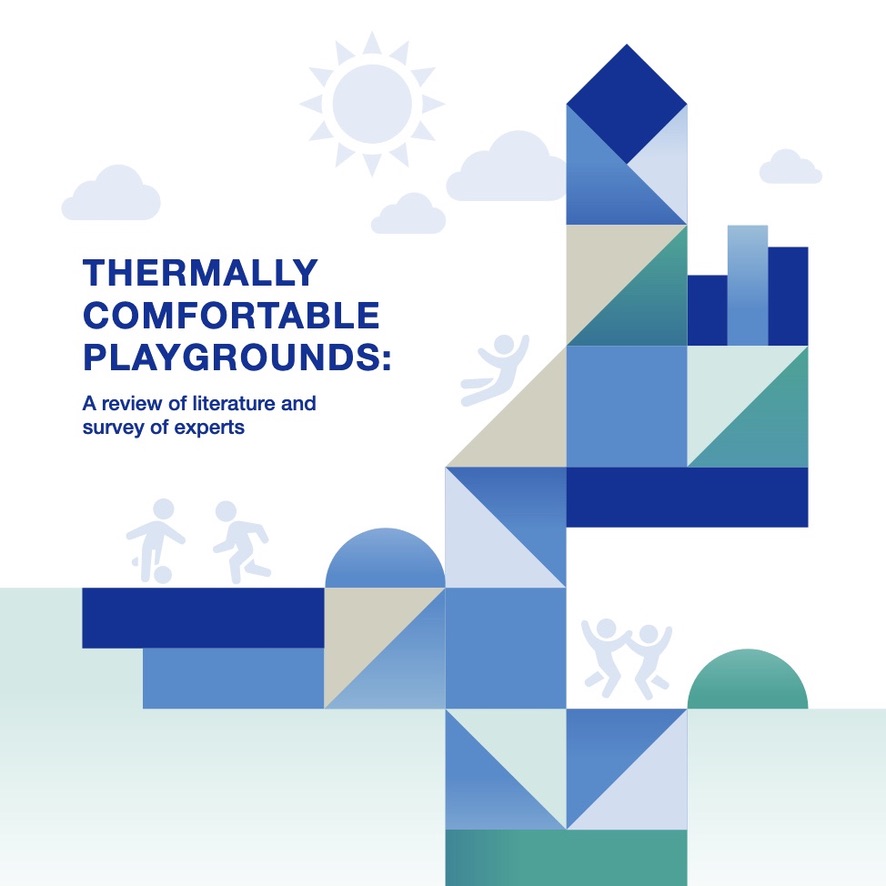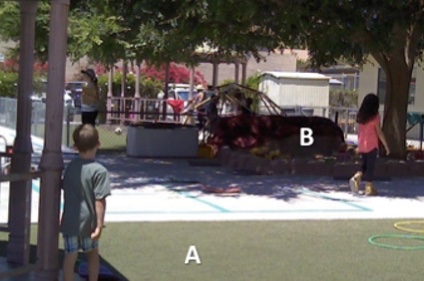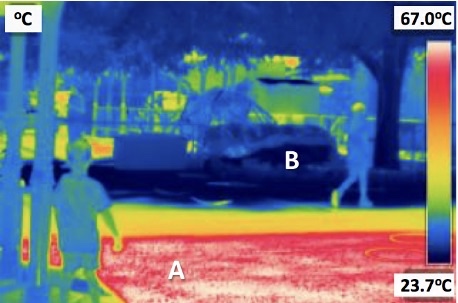Playground Designs Can Help Protect Children As Climate Warms, Experts Say
Texas A&M Geography doctoral student Daniel Vecellio is part of a team of experts providing the Standards Council of Canada (SCC) with data to help keep playgrounds comfortable and safe.
Dec 14, 2020


How can safe practices be implemented in playgrounds as climate change accelerates and causes temperatures to significantly rise over time? Earlier this year, a team of scientists that included Daniel Vecellio, a doctoral candidate in the Department of Geography at Texas A&M University, published research on thermal safety for playgrounds.
Funded by the Standards Council of Canada (SCC) National Program for Playground Safety (NPPS), the “Thermal Comfortable Playgrounds: A review of literature and survey of experts" report emphasized how important outdoor areas are for the growth and development of children, but also examined what changes can be implemented in playgrounds to make them safer, more thermally accommodating areas without exposing children to environmental risks.
“The purpose of this report was to highlight the importance of thermal safety and comfort in playgrounds and the need to consider it in concert with already established playground safety standards such as surface impact attenuation, accessibility, and structural integrity of equipment among other factors,” Vecellio said.
“This report was part literature review and part survey including those who work in academics, children’s health, landscape and urban planning, playground design, equipment manufacturing and installing, etc., followed by recommendations and guidelines for future playground design taking into account thermal comfort and safety,” Vecellio added.
Vecellio studies land-atmosphere interactions in cold regions, biometeorology, and how weather and climate affect human health. This project was led in part by his Master’s advisor Dr. Jennifer Vanos, an assistant professor in the School of Sustainability at Arizona State University.
“Playgrounds may be in compliance with these standards, but lack things such as adequate shading, green space, and water features, which could expose children to physiological harm through overheating or other hazards such as sunburns due to more sensitive skin and thermal burns due to prolonged sun exposure of playground equipment,” he said.
Since the study region for this report was in Canada, there are other environmental factors that also hinder safety in playgrounds.
“Additionally, in Canada with its prolonged cold seasons, thermal comfort in the winter must also be taken into consideration by blocking bitter, cold winds and allowing low wintertime sunlight into the play space to ensure year-round comfortable play,” Vecellio noted.
“I was invited by Dr. Vanos to collaborate with Drs. Heather Olsen and Eric Kennedy of the National Program for Playground Safety on this project,” he added. “I was excited at the prospect of working on it because it truly encompassed my interest in climate and health and would have a direct impact on creating safer, healthier, and more inclusive spaces for children and families to get active.”
Vecellio’s main role in the research was contributing to the literature review which helped to provide the motivation for the project and survey, the analysis of the expert survey responses, and the recommendations for thermal comfort considerations and future advocacy efforts to improve the thermal safety of playgrounds. Additionally, he has and will continue to author peer-reviewed research stemming from the results of the expert thermal comfort survey.


“Playgrounds provide spaces for outdoor physical activity for children, which has been shown to help with not only their physical health, but also their mental health and cognitive development,” Vecellio said. “They have become even more important spaces in a COVID-19 world, as activities, especially this past summer, shifted outdoors as it was easier to socially distance.”
What Is Thermal Comfort?
Incorporating thermal comfort into playground designs is a key consideration, Vecellio said.
“Thermal comfort is defined as a person’s satisfaction with their thermal environment, which is based on both physiological and psychological properties, and results when an individual has no preference to be warmer or cooler,” he stated. “It is affected by six variables: four environmental (ambient air temperature, humidity, radiative load, and wind flow), and two behavioural (clothing insulation and metabolic rate).”
“On playground-level scales, design decisions largely can only significantly affect radiative load (i.e. sun exposure) and wind flow for comfort, so these should be the focus of design consideration,” Vecellio added. “Some design considerations can make small-scale changes to air temperature and humidity, but are not as effective as the previous two.”
Vecellio emphasized the importance of creating a thermally comfortable environment to ensure that children remain safe from harm while they spend time in playgrounds.
“Users of playgrounds need to be comfortable and healthy within them or else play will be cut short and the healthy benefits of being active will not be realized,” he said. “This will only continue to be more important as the effects of climate change become more and more apparent in the future.”
Simple And Effective Solutions To Improve Playground Designs
Vecellio shared that there are simple improvements to playgrounds, that once implemented, could make a large, immediate difference in safety and thermal comfort in playgrounds.
“The great thing about creating thermally comfortable playgrounds is that simple design decisions can have great individual and synergetic benefits in improving the health of its users,” he said. “Designers can make use of nearby buildings or trees, and orient high-use play areas to be in their shadows, essentially cooling these areas and cutting down on sun exposure for free.”
There are also multi-purpose natural additions such as trees, which can bring a multitude of benefits to playgrounds.
“Something as simple as the use and placement of deciduous trees can have numerous benefits,” Vecellio said. “During the summer, these trees can be installed in areas to provide as much shade as possible to keep users cool.”
“Concurrently, a wind study of the area should also be done to ensure that they are also placed in a spot that blocks cold season winds. And because these trees lose their leaves during winter, they will be able to let sunlight shine through to help provide additional warmth during the cold season.”
Adding green spaces in proximity to playgrounds will provide added benefits, and an overall improvement in the level of thermal comfort for visitors across seasons.
“The addition of green spaces within playspaces are not only an aesthetic feature but allow for increased microclimatic cooling of the area through evapotranspiration and lower surface temperatures when compared to concrete or asphalt,” he said.
Moving Forward
After discovering simple measures that can be implemented to ensure thermal comfort is present in playgrounds, Vecellio hopes playground designers can implement the discussed solutions.
“By marrying the environmental setup of the site with subsequent design of the built playground environment, standards of physical safety and thermal comfort can be upheld in tandem,” he said. “In creating the safest play environments possible, we have the ability to ensure that childrens’ health and well-being is given high priority while also providing a fun experience.”
These findings are now part of new informational Annex in the CSA Z614:20 children's playground equipment and surfacing, which was released this year.
By Mariam Moeen’19
